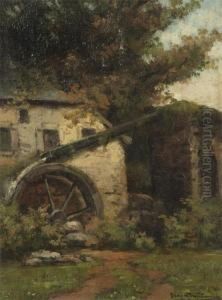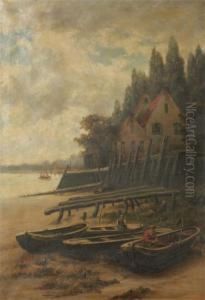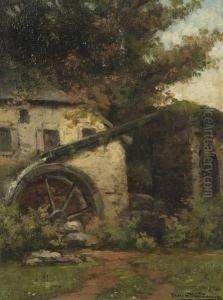Prosper Van Luppen Paintings
Prosper Van Luppen was a Belgian artist born in 1856, distinguished for his contributions to the world of painting during the late 19th and early 20th centuries. His works, primarily focused on landscapes, interiors, and still life, exude a sense of tranquility and meticulous attention to detail, characteristic of his era's artistic endeavors. Van Luppen's style, while deeply rooted in the traditions of his Belgian heritage, also displayed an openness to the evolving trends of European art, making him a significant figure in the transitionary period of art history.
Throughout his career, Van Luppen was known for his adept use of light and shadow, a skill that added a profound depth and realism to his compositions. His landscapes, often depicting the serene Belgian countryside, are particularly notable for their ability to capture the mood and atmosphere of the setting, a testament to his keen observation and sensitivity to his environment. His interiors and still lifes, on the other hand, are celebrated for their precision and the vibrancy of their color palette, reflecting the influence of the Impressionist movement, which was gaining prominence during his lifetime.
Van Luppen's contribution to art was not confined to his paintings alone. He was an active member of the Belgian art community, participating in exhibitions and contributing to the artistic discourse of the time. His works were exhibited in several important galleries and exhibitions across Europe, gaining him recognition and acclaim. Despite the recognition, much of his life and work remained anchored in Belgium, where he drew continuous inspiration from the landscape and people.
Prosper Van Luppen's death in 1929 marked the end of a career that had spanned over seven decades. His legacy, embodied in his extensive body of work, continues to be celebrated in Belgium and beyond. His paintings are held in high regard, not only for their aesthetic beauty but also for their historical significance, offering insights into the cultural and artistic transitions of late 19th and early 20th century Europe. Van Luppen remains a respected figure in the annals of Belgian art history, his works a lasting tribute to the rich artistic heritage of his homeland.


